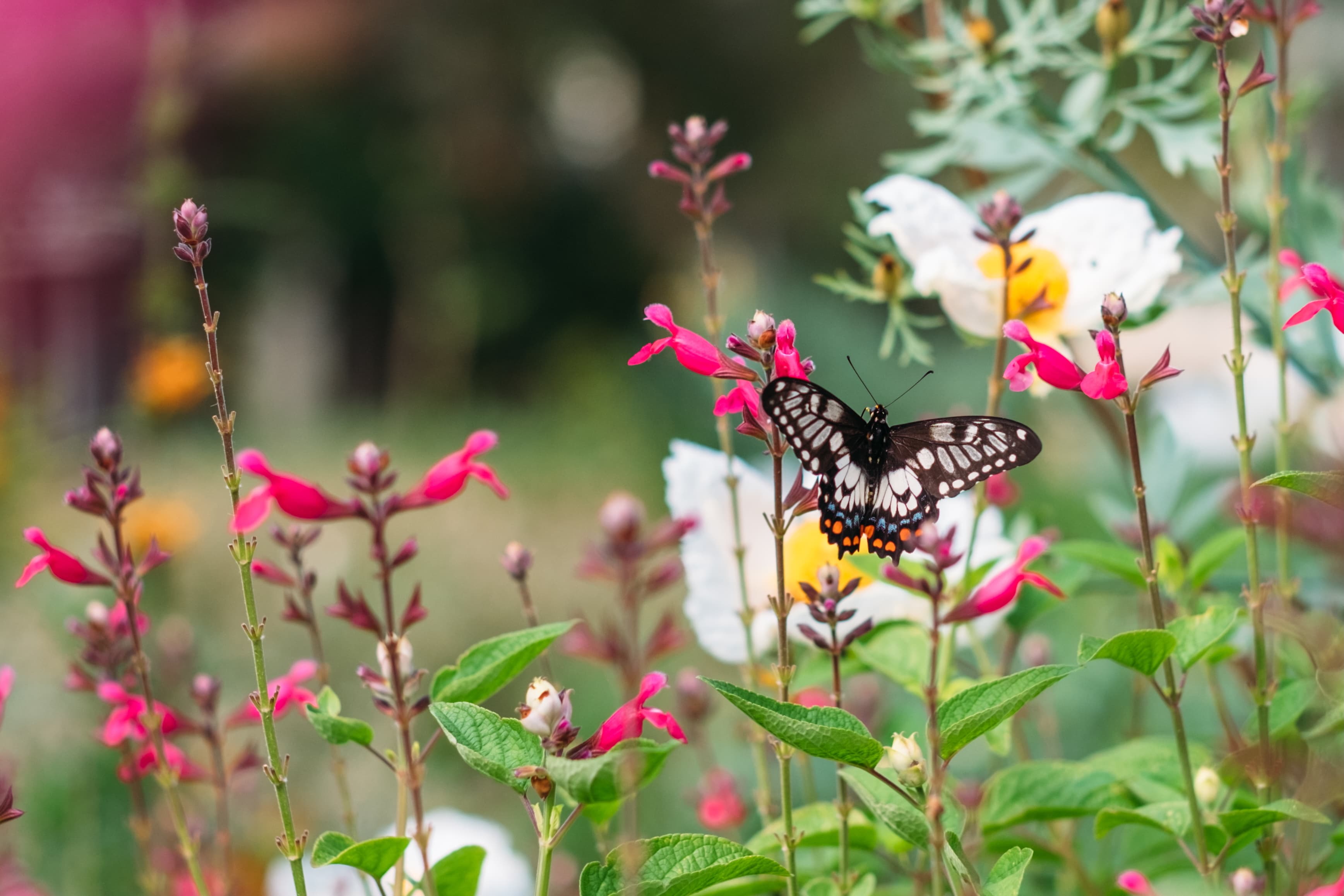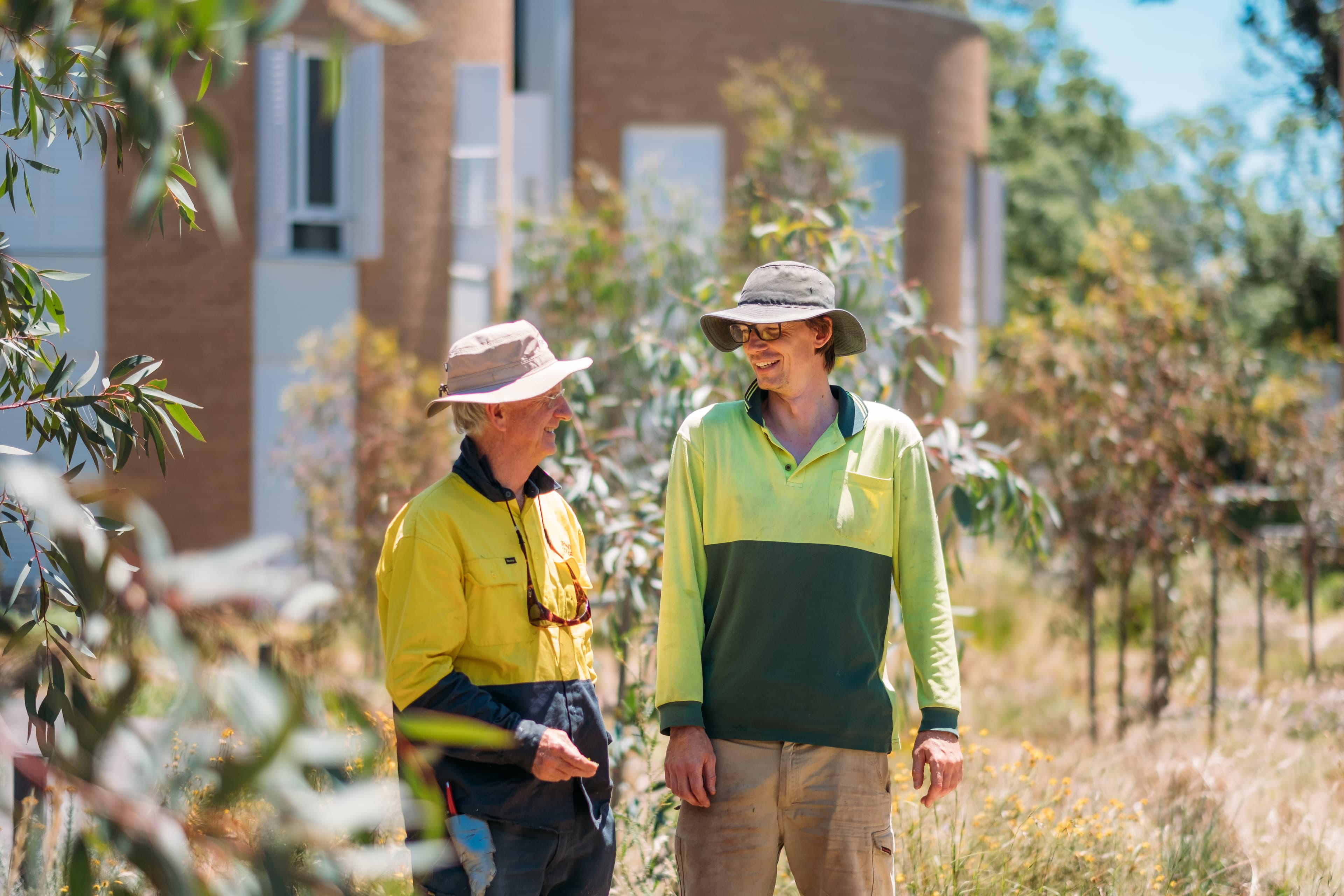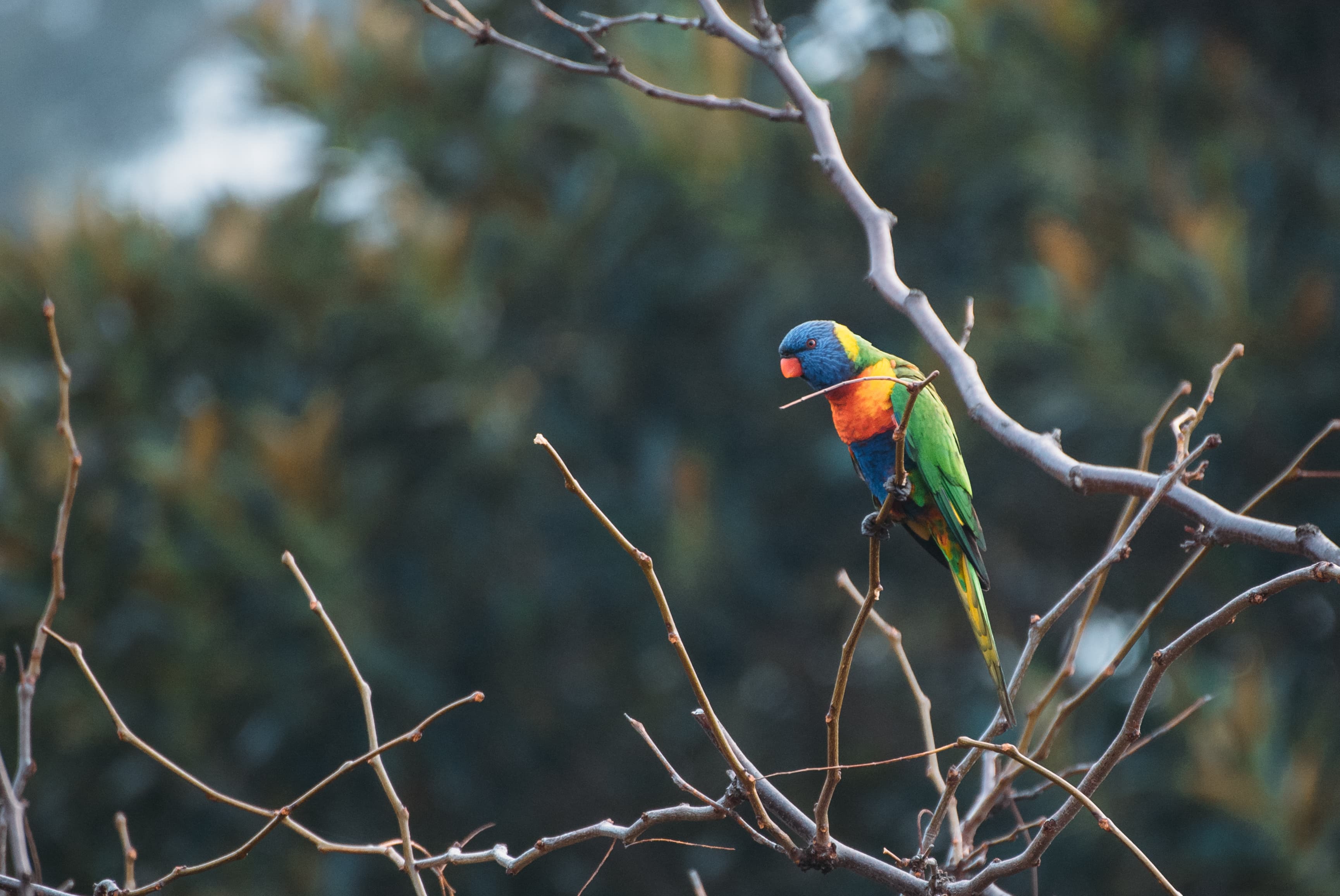A Legacy of Ormond Landscapes
Anna Drummond

After 38 years tending Ormond’s gardens, Head Gardener Colin Barnes leaves behind a living legacy – from reclaimed terraces to native landscapes – his care and vision have shaped the College grounds into the vibrant, ever-evolving sanctuary they are today.
Sunday 13 March 2022 • 5 minute read
Most Ormond students and staff from the last three decades would remember Colin Barnes. They would certainly be familiar with his work, as Colin’s hand is in every part of Ormond’s beautiful gardens, along with that of his assistants, most recently Michael ‘Stretch’ Neugebauer.When Colin first came to Ormond in 1982, he was immediately struck by the gardens. He is perhaps one of the few visitors to College not to have been immediately distracted by the buildings! Since then, the grounds and College have changed a great deal. Colin recalls that when he arrived the College did not even own a wheelbarrow. In a testament to his lasting impact, we now have two!Much of Colin’s first decade at the College was spent under Master David Parker, who had a great love for the gardens, and invested in their revitalisation. During his tenure Parker Terrace was created in place of a car park, while the Allen House front garden was also reclaimed from the driveway. In the interest of showcasing the gardens, David Parker also ended car parking along the main drive and around Main Building, which, much to Colin’s pleasure, prevented students from driving on the lawns. This habit is what prompted Colin to build the low wall around the roundabout at the front of Main Building—known by some Ormondians as Dogs’ Delight— which still stands today.

Since then the gardens have continued to evolve, thanks to both the changing landscape of the College’s buildings, and the ever-unpredictable Melbourne climate. It may not come as a surprise that there was a period when the College’s mid-century architecture was less popular with the Ormond community, prompting Colin and his apprentices to grow vines on the Picken Buildings. Crabapple trees and shrubs were also planted to soften and conceal the MacFarland Library. As mid-century architecture came back into vogue, the vines on Picken were removed, and similarly, when the Library was refurbished and the ‘chute’ between it and Main Building demolished, new plantings no longer sought to hide its distinctive form. Other vines went for a different reason: the distinctive Boston Ivy that once covered the interior of the Quadrangle and much of the back of the College was mostly removed to protect the Main Building stonework.“Colin’s immense contribution to our community cannot be understated. We are all the beneficiaries of his passion and care for the college’s landscape, while his legacy will live on and be enjoyed by future generations of Ormondians.” - Lara McKay, MasterThe Millenium Drought was a period of evolution for the College’s grounds, as Colin undertook a coordinated plan to adapt the gardens to the ongoing drier conditions. The silver birch that used to adorn Dogs’ Delight was one victim of the drought, while the dry conditions also prompted the removal of the colourful but thirsty flowering stocks, foxgloves, and salvias along the driveway. They were replaced with hardier and more permanent perennials and succulents.Significant building works during the tenure of Dr Rufus Black saw the creation of Colin’s now-favourite part of the garden, in what used to be known as Wyselaskie Lawn. When the area was revamped to make way for the Wade Institute and Graduate Buildings, Colin proposed the Indigenous planting scheme inspired by his bushwalking trips to central Australia, and his strong commitment to reflecting the original sense of place at Ormond. With its native grasses, lemon-scented gums and dry creek bed, this is now a beautiful and distinctively Australian part of the Ormond grounds, which more closely reflects the bushland inhabited by the Traditional Owners, the Wurundjeri People, for many thousands of years.And just as the gardens have altered over the course of his time at Ormond, so too has the College itself. He says it is more diverse and inclusive now, and has better gender equality than at times in the past. Students, too, are respectful of the gardens today, and work together with staff to manage the impact of events on the grounds.Reflecting on his time at the College, Colin feels very privileged to have worked with the natural world for nearly four decades, especially in a place as beautiful as Ormond. He still returns regularly to visit the garden to which he has devoted much of his professional life, to enjoy the moments which were his favourite part of the job; simply looking around the gardens in the morning sun, perhaps as it filters through the pink salvias or his favourite lemon scented gum or Moreton Bay fig. That the Ormond community can enjoy so many similarly beautiful moments in the College gardens is in large part due to Colin Barnes.
“Sometimes, looking around the garden in the morning sun, you see the beauty of things. You see all the plants, you look across all the flowers, see the light coming through on the pink salvias, the light running through the trees.”

Explore our publications
Ormond’s publications capture the life of the College – its people, ideas and impact across generations. From stories of students shaping their world to updates from alumni making a difference far beyond Parkville, each edition reflects the spirit of curiosity and community that defines Ormond.
Read more